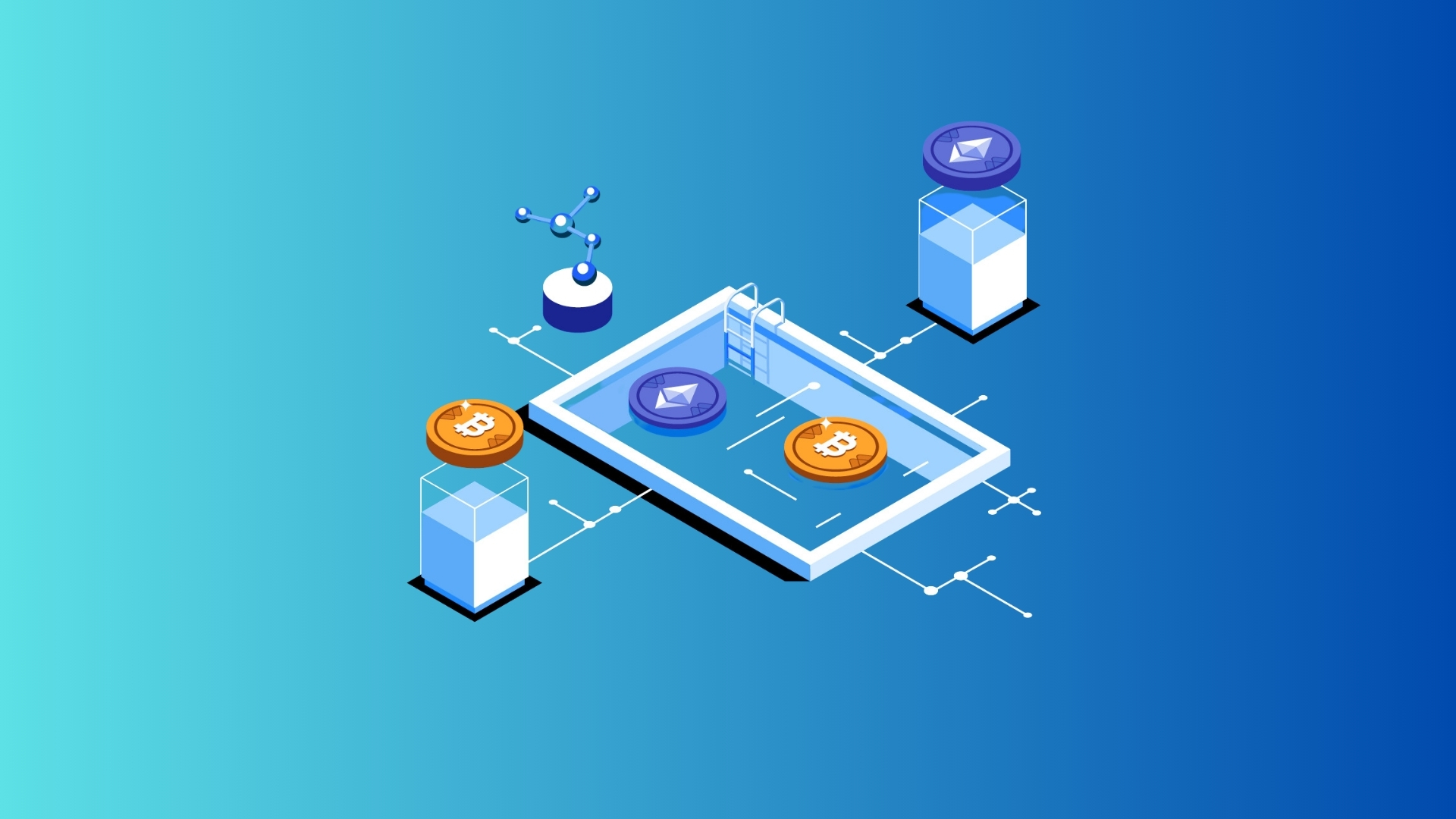What is Liquidity Pool?
Jump to section
Liquidity pools are essential components of decentralized finance (DeFi), enabling decentralized exchanges (DEXs) to function without intermediaries. Unlike centralized exchanges that use an order book system managed by third parties, DEXs rely on community-funded liquidity pools. These pools act as asset reserves, allowing users to trade without direct counterparties, thanks to smart contracts that facilitate the trades. This process ensures instant liquidity and seamless transactions.
How Do Liquidity Pools Work?
Liquidity Providers (LPs)
Liquidity pools are collections of funds locked in a smart contract by voluntary depositors known as liquidity providers (LPs). Anyone can become an LP by following a few simple steps. Each pool typically contains a pair of cryptocurrencies for trading. For example, an ETH/USDC pool allows users to trade ether (ETH) for USD Coin (USDC).
In exchange for providing assets, LPs receive LP tokens representing their share of the pool. These tokens entitle LPs to a proportional share of the transaction fees charged to traders using the pool. Additionally, LP tokens can often be staked on other DeFi platforms to earn extra yields, a strategy known as yield farming.
Most DEX platforms allow LPs to withdraw their assets at any time by redeeming their LP tokens. The smart contract then burns the LP tokens, and the DEX transfers the assets back to the user’s wallet.
AMM Algorithm
Automated Market Maker (AMM) protocols use algorithms to ensure that asset prices in liquidity pools align with broader market prices. Uniswap, one of the largest DEXs, employs the Constant Product Market Maker algorithm, represented by the formula:
x * y = k
Here, x and y are the two paired assets, and k is a constant. The algorithm adjusts asset prices within the pool to maintain this constant value. For instance, if a trader swaps a large quantity of one asset, the algorithm increases the price of the other asset to balance the pool, ensuring market liquidity.
Risks of Using DeFi Liquidity Pools
Before committing assets to DeFi liquidity pools, it is essential to understand the associated risks:
Impermanent Loss: This occurs when the fiat value of assets in a pool becomes less than their market price due to automatic price adjustments by AMM algorithms. Although considered “impermanent,” this loss only becomes permanent if LPs withdraw their tokens at a loss.
Smart Contract Bugs: Smart contracts are vulnerable to bugs and exploits, leading to potential loss of funds. Independent code audits can mitigate this risk, but some vulnerabilities may still go unnoticed.
Rug Pulls: A rug pull is a scam where project creators drain a liquidity pool by dumping a large number of tokens, leaving investors with worthless assets. It is crucial to research projects thoroughly to avoid falling victim to such scams.
How to Use a Liquidity Pool
To become a liquidity provider, follow these steps:
Choose a Platform: Popular DEXs include Uniswap, SushiSwap, Curve, Balancer, and PancakeSwap. Each platform has its governance tokens and unique features, so choose one that aligns with your risk tolerance and preferences. Use ranking websites like Pools and CoinMarketCap to compare different pools.
Connect Your Crypto Wallet: Once you select a platform, connect your crypto wallet by clicking the “connect” button on the platform’s homepage. MetaMask is a widely used wallet for Ethereum-based DEXs. Always verify the legitimacy of the DEX to avoid phishing scams.
Select a Pair: Choose a liquidity pool to join. You may need to own and deposit both assets in the pair. For example, to join a LINK/USDC pool, you need both Chainlink (LINK) and USD Coin (USDC). The platform usually calculates the required deposit amounts for you.
Add Liquidity: For first-time users, setting up a proxy contract or signing a transaction message may be necessary. These one-time actions may incur gas fees. After depositing the required assets, you will receive LP tokens representing your share of the pool. These tokens accrue transaction fees, which you can claim upon redemption.
Conclusion
Liquidity pools are vital to the DeFi ecosystem, enabling seamless, intermediary-free trading on DEXs. By understanding how liquidity pools work and the associated risks, you can make informed decisions about participating in DeFi. As always, exercise caution, perform thorough research, and stay vigilant to protect your assets.

